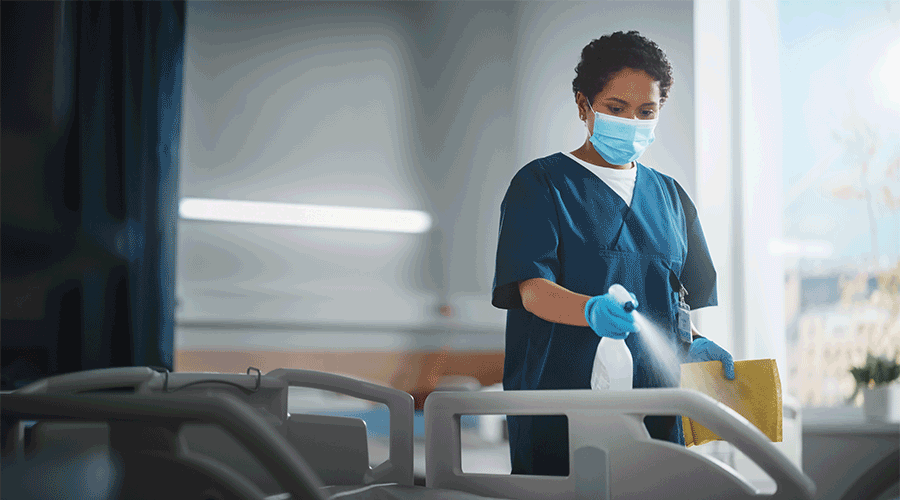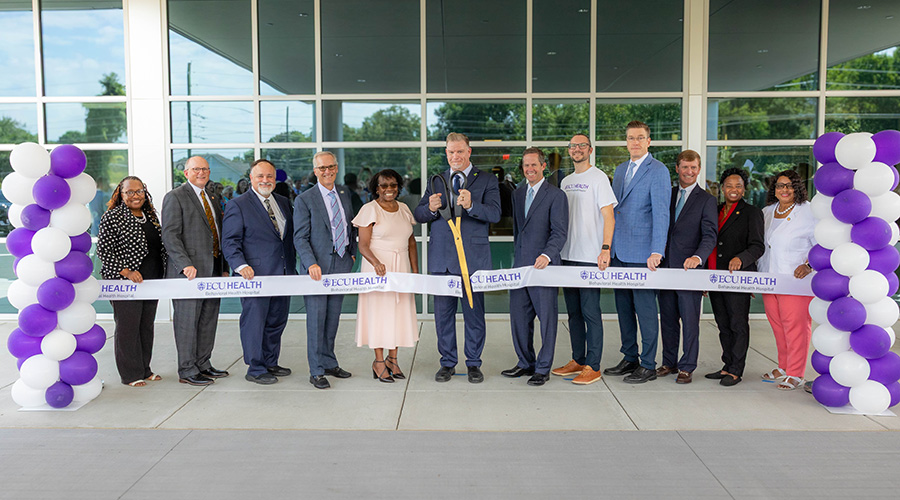In most cleaning situations that require environmental services workers to kill pathogens, a disinfectant product gets the job done. Effective cleaning removes many of the pathogens that environmental services departments want to contain. But the stuff that is left behind tends to reproduce, re-polluting the surfaces workers are trying to keep clean.
The goal is to maintain clean, dry surfaces and manage pathogen levels so they are contained. Most environmental services departments can accomplish this goal by using a disinfectant product.
Disease-causing microorganisms such as COVID-19, influenza, norovirus and respiratory syncytial virus (RSV) can survive up to 24 hours on hard, nonporous surfaces. Workers use disinfectants to eliminate or greatly reduce these live pathogens and help prevent the transmission of disease.
A disinfectant is intended to destroy or neutralize one or more specific microbial groups. The U.S. Environmental Protection Agency (EPA) controls the registration of disinfectants just as they do pesticides.
What do pest control and cleaning for health have in common? Both activities use pesticides. In the eyes of the law, sanitizer and disinfectant products are considered pesticides.
If managers are wary of using pesticides, exercise caution when choosing and using disinfectants. Pesticides that fight microbes are generally called antimicrobials. Those that fight germs affecting human health can be further classified as sanitizers, disinfectants, virucides and sterilants.
Since early 2020, hygiene theater has become popular as surfaces have been disinfected with a wipe and walk motion. Are those surfaces safe?
Unlike instructions on a box of macaroni and cheese, instructions on a disinfectant label are the law, not suggestions. Applying some disinfectants with cotton rags or paper towels might neutralize or absorb the active ingredients, which is a violation of federal pesticide laws. Workers need to pay attention to contact times on the label. Many disinfectants must remain wet for a specific time — usually up to 10 minutes.
If you have a problem with spiders in your home, you call a pest control company to spray your home to get rid of the pests, right? What do you do if after two or three days you’re still seeing live spiders but no dead ones?
After insisting the company owner pay a visit, it is determined that the pest control technician was using a watered-down pesticide. Besides demanding a full refund, you take to social media to expose the company and its practices of ineffective pest management.
The practice of pesticide dilution is only making the spiders immune to that product, and the company is fined for off-label use because it is a violation of federal law.
Why should disinfectant use in a hospital be any different?
Quaternary ammonium compounds are the most used hard surface disinfectants in the United States. Most are a mixture of two or more so-called quats. There is a wide body of evidence to support the issue of cotton or other cellulosic materials such as paper towels and the neutralizing effect on quaternary ammonia disinfectants.
Workers cannot kill the pathogens if you do not make contact using an activated disinfect that is allowed to remain wet according to the product’s label.
J. Darrel Hicks, BA, MESRE, CHESP, Certificate of Mastery in Infection Prevention, is the past president of the Healthcare Surfaces Institute. Hicks is a nationally recognized subject matter expert in infection prevention and control as it relates to cleaning. He is the owner and principal of Safe, Clean and Disinfected. His enterprise specializes in B2B consulting, webinar presentations, seminars and facility consulting services related to cleaning and disinfection. He can be reached at darrel@darrelhicks.com. Learn more at www.darrelhicks.com.

 Third-Party Tracking Settlement is a Compliance Wake-Up Call for Healthcare Facilities Managers
Third-Party Tracking Settlement is a Compliance Wake-Up Call for Healthcare Facilities Managers ECU Health Behavioral Health Hospital Hosts Ribbon-Cutting Ceremony for New Facility
ECU Health Behavioral Health Hospital Hosts Ribbon-Cutting Ceremony for New Facility Aspire Rural Health System Reports Data Security Incident
Aspire Rural Health System Reports Data Security Incident Fatal Flaws: Strategies for Active Attackers
Fatal Flaws: Strategies for Active Attackers Detroit Hospital Shooting Underscores Need for Training and Preparedness
Detroit Hospital Shooting Underscores Need for Training and Preparedness